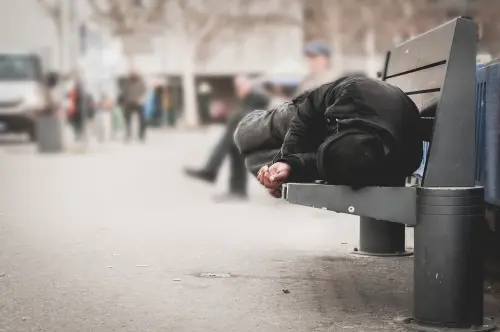As the nation and the world continued to grapple with the H1N1 virus, school closures were one policy tool under consideration to slow spread of the pandemic. In the first comprehensive U.S. study of the economic cost of school and daycare center closures, authors Howard Lempel, Ross Hammond and Joshua Epstein found that closing all schools in the U.S. for four weeks could cost between $10 to $47 billion dollars–a conservative estimate, since only earnings rather than total compensation were used to calculate costs–and could lead to a reduction of up to 19% in key health care personnel.
On October 21, Ross Hammond, a Brookings fellow and co-author of the report, “Economic Cost and Health Care Workforce Effects of School Closures in the U.S.,” and Fred Barbash, Politico senior editor, hosted a live web chat about the implications and potential costs of school closures
12:29 Fred Barbash-Moderator: Good afternoon or morning, or, I suppose evening for some. Welcome to the weekly POLITICO-Brookings chat. Our guest today is Ross Hammond, a Brookings fellow and co-author of the report, “Economic Cost and Health Care Workforce Effects of School Closures in the U.S.
Thanks for being here Ross and thanks to all our readers. Let me begin Ross by asking you for a really brief summary of your study and a little bit about how you arrived at these figures.
12:30 Ross Hammond: Thanks, Fred. The purpose of our study is to give an estimate of the potential economic costs associated with widespread school closures. When schools close, parents must find a way to care for children who are at home. In some cases, this will mean adults missing work to take care of children. Those missed work hours add up to real costs to the economy (and to households).
12:31 Ross Hammond: In our study, we try to identify which households will have workers who will need to be absent to care for children, and add up the costs of those missed work hours in terms of goods and services in the economy.
12:32 Ross Hammond: We also try to estimate how many of the absentees will come from the health care sector, which could affect the delivery of health services.
12:32 [Comment From Jason] Why are school closures being discussed as a response to the flu pandemic?
12:33 Ross Hammond: Closing schools can reduce social contact among children and thus slow the spread of the virus (assuming they don’t mix elsewhere, like malls or playgrounds). Some recent studies in epidemiology have suggested that school closures could modestly reduce the total number of cases and might delay the “peak” of the epidemic, buying more time for vaccine to become available. Individual schools may also decide to close if so many of their students or staff are out ill that it is difficult to carry on their educational mission.
12:33 [Comment From Fred in VA] With H1N1 vaccine delays occurring across the country, do you think it will be more likely that we’ll see a scenario like what you describe in your study?
12:34 Ross Hammond: Yes, that is certainly a possibility. The current CDC recommendation is that schools close only as a last resort, in cases of widespread illness. But if the vaccine is substantially delayed, school closure might become an important option.
12:35 [Comment From Kenneth] Where do you think swine flu will rank on the scale of pandemics?
12:35 Ross Hammond: The H1N1 epidemic is currently rated by the WHO as Phase 6 (pandemic), its highest category. It’s important to note, however, that the WHO ranking reflects how easily the virus spreads, not how sick it makes those who get it.
12:35 [Comment From Shawn] How are school closures connected with the health care workforce?
12:35 Ross Hammond: If schools close, some of the adults who will miss work to care for kids will come from the health care workforce. We estimate that this could amount to as much as 19% of the health care workforce, potentially seriously affecting the ability of the health system to treat the ill, or deliver vaccine.
12:37 [Comment From Paula] Is there any particular reason why school closures are being discussed for h1N1 this year as opposed to “normal” flu seasons?
12:38 Ross Hammond: Good question. School closures were advised in the spring because of a concern that this virus could become much more widespread, and more serious, than seasonal influenza. The H1N1 virus has continued to spread over the summer and early fall, which is unusual for flu–it’s usually a very seasonal illness, beginning in late fall and early winter.
12:39 [Comment From Sally] how did you come up with those cost figures?
12:41 Ross Hammond: We used a variety of public data sources to look at households across the US, and try to evaluate where workers might have to be absent to care for children. For example, we looked to see if a household (a) had school-age children (b) had any adult who were not working full time (c) had access to any informal childcare or (d) had adults who could work from home. If a household had school-age children, all adults were working full time, none could work from home, and no informal child care was available, we assumed someone would have to miss work if schools were to close.
12:42 [Comment From Teresa] If schools are closed and children go to places like the mall or the movies, will this mitigate the usefulness of closing the school in the first place? What about the possibility of an uptick in daycare or other options where children will be in close proximity?
12:43 Ross Hammond: This is an important point. The potential benefit of school closures (and the main reason they are being considered as a public health measure) is to reduce social contact among children and slow the spread of the virus. But if kids who are not in school instead mix at the mall or playground, this reduces the potential benefit. In our study, we assume that school closures would also mean closure of day care centers and other kinds of formal child care.
12:44 [Comment From Dave] Have there been a lot of school closures thus far? I haven’t heard of any in the DC area.
12:45 Ross Hammond: There were quite a few school closures last spring. This fall, there have been sporadic closures across the country, but nothing widespread as yet.
12:45 [Comment From Erin] How are the costs distributed? Who is most affected?
12:47 Ross Hammond: Unfortunately, the household costs of absenteeism due to school closure could disproportionately affect low-income households. About 20% of the projected absentees in our study would come from households with no other workers, who would have no other income if their sole wage-earner misses work. These are predominantly low income households. It’s also important to bear in mind that about 30% of American workers have no paid sick leave and may not be able to afford to miss work for childcare, and that approximately 30 million children a day rely on subsidized school meals and other services (which won’t be available if schools close).
12:48 [Comment From Eric] How can the impact of closing schools on education be measured?
12:49 Ross Hammond: In addition to the immediate costs to the economy, closing schools also results in lost learning. Estimates of this cost are around $6.1 billion per week of closure.
12:49 [Comment From Lester] Do YOU think that school closures are a good idea or a bad idea? Are they worth it?
12:52 Ross Hammond: If the epidemic becomes severe, the benefits of school closure might easily outweigh all of these costs. Several recent studies evaluate the potential benefits of school closure. The purpose of our study is to provide policymakers the best available estimates on the cost side, to enable the best possible decision-making. Whether closure is worth it or not will depend on how circumstances unfold as the pandemic continues this fall. Currently, the CDC is recommending that schools close only as a last resort.
12:53 [Comment From Diane] And, for that matter, what about large workplaces? I work in an office with a really high number of cubicles with many people working in close proximity.
12:55 Ross Hammond: Workplaces are certainly also a place where the virus can spread, and businesses are being advised to explore options for telecommuting or limiting spread at work. The current data suggests that the virus especially affects young adults and school-age children, making schools a particular policy focus.
12:56 [Comment From Diane] Has there been any discussion about swine flu and colleges/universities? It seems like college dorms would be a breeding ground for flu virus.
12:57 Ross Hammond: Colleges and universities have certainly been affected. I believe in some cases, they have even set up special temporary dorms and even classes to quarantine those with flu. Colleges and universities aren’t the particular focus of our study, because closure of colleges probably wont require as many working parents to stay home.
12:58 [Comment From Ethan] Do you see swine flu getting worse this fall than it was in the spring?
12:58 Ross Hammond: Its hard to tell. We are now entering the usual season for flu, though, so it would seem reasonable to expect an uptick in cases.
12:59 [Comment From Liana] My husband had the flu last week, and when he went to the doctor, she said that they are just assuming any flu case is actually swine flu. why are doctors making this assumption? should people even bother with “normal” flu vaccines?
12:59 Ross Hammond: This is probably because “normal” flu is a very seasonal illness, and its still quite early for seasonal flu to be making an appearance. Therefore, most of the flu cases around now might be presumed to be H1N1.
1:00 [Comment From Ray] have a lot of people died from h1n1? it seems sort of crazy that smoeone could die from the flu. did people who died because of swine flu ever see a doctor?
1:01 Ross Hammond: I dont have statistics on this in front of me, but remember that about 36,000 people die from seasonal flu-related causes each year in the US, according to the CDC.
1:01 [Comment From Ben] Back to the topic of school closures. Wouldn’t it make more sense to just vaccinate all school-age children than to shut schools down?
1:02 Ross Hammond: Widespread vaccination is a critical part of the current plan. It remains to be seen how quickly enough vaccine will be available.
1:06 [Comment From Paula] Is there any particular reason why school coslures are being discussed for H1n1 this year as opposed to
1:07 Ross Hammond: This is in part because the H1N1 flu seems to be spreading very quickly and widely, and also seems to affect young adults and school-age children particularly strongly.
1:10 [Comment From Karl Knapstein] There is actually discussion to close ALL the schools?!? some say the flu has run it’s course (mayor blumberg) this is so much hype for a mild flu (290 deaths so far) WHY?
1:11 Ross Hammond: There was discussion about very widespread school closure in the spring; this may yet come to pass if the virus continues to spread rapidly. But in our study, we also break down the cost to a per-student, per-week cost (about $157) to allow estimates for very localized or regional closures.
1:12 [Comment From Suzanne] I’ve heard that CSED does modeling of things like pandemics. What exactly is modeling? Does it help predict what could happen? If so, have you done it for swine flu?
1:14 Ross Hammond: Yes, our Center on Social and Economic Dynamics here at Brookings does a lot of modeling of public health. We often use a technique called “agent-based computational modeling”, in which we construct artificial socieites on computers to help understand how real ones behave, how something like a flu pandemic might unfold, and what impact various policy choices might have. We are doing some work on flu currently using these models. The school closure study doesn’t use this type of modeling; its more focused on understanding the costs of the particular policy of school closure.
1:18 [Comment From Suzanne] Any sneak peak in to what you’re seeing on flu so far?
1:19 Ross Hammond: Part of the difficulty in modeling the H1N1 pandemic is that it’s a very new virus. We have pretty limited data to work with, and there’s a lot of uncertainty about how it will behave.
1:20 [Comment From Chico] Who (or which groups) is pushing hardest for school closures? And which grade levels are they’re proposing to include?
1:21 Ross Hammond: School closure is a decision made at the local level, but the CDC and other public health agencies offer guidance about criteria for when to close schools.
1:26 Fred Barbash: Thats about all the time we have for today. Ross, this has been great – thanks so much for participating.
And thanks to our readers for all your great questions. Sorry we couldn’t get to them all.
1:26 Fred Barbash: Please join us next week at the same time.
Bye for now.



Commentary
The Scouting Report Web Chat: Flu Contagion in Schools
October 21, 2009